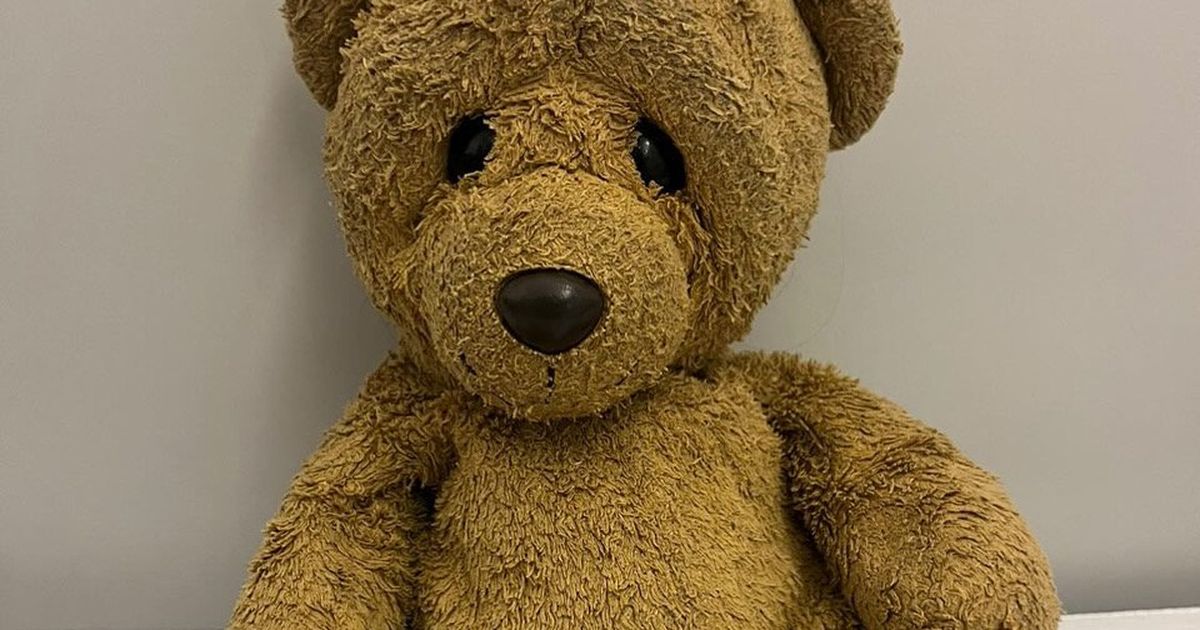Children’s book author and illustrator Sophie Blackall was working on the drawings for her new book, “Stella & Marigold: Mermaids and Mix-Ups,” when she had an idea.
Her collaborator, Annie Barrows, had written a scene involving dozens of stuffed animals being tossed into the air as the two main characters – a pair of sisters, ages 4 and 7 – play “catch-the-stuffie-with-your-feet.”
“When I realized I had the opportunity to draw a hundred stuffed animals, I thought, I could invent them,” Blackall said. But, “it would be so much more fun to engage people.”
So she posted on Instagram asking her readers and fans to submit pictures of their beloved stuffed friends. She got more than 500 responses in a matter of days, with most photos including a backstory. Some were hilarious, some were tender. But many were deeply moving tales about children trying to makes sense of their world.
A common theme was that the soft toys were particularly good for absorbing tears. There was a blue bunny a girl gave her little brother while he was in the hospital. And a hermit crab that was a replacement for a beloved real hermit crab pet-for-a-day that “devastatingly” had to be returned to the ocean. She got a photo of an octopus that can change feelings.
There was a hippo that a girl received when she was 3, and still sleeps with every night eight years later. The parent wrote, “He holds her tears and carries her worries.”
The hippo, Blackall said, looked exceedingly well loved.
“That this lump of corduroy is imbued with all of these highs and lows and cares and concerns and secrets and heartaches of this particular child,” Blackall said. “I think that’s such a universal thing.”
Blackall – award-winning author and illustrator of dozens of children’s books, including the Ivy and Bean series – said one of the stories that landed in her inbox stood out as particularly powerful and heartbreaking.
A 4-year-old’s identical twin, Parker, died soon after birth. Before the baby died, the hospital recorded his heartbeat and placed it inside a stuffed lion. The family calls him Parker Lion, and Blackall included a drawing of him in the new book.
“It’s meaningful because it’s one little opportunity for our Parker to be remembered,” said his mom, Juliette Hunsicker. “We felt so honored.” Her two other children love Blackall’s books.
This isn’t the first time Blackall has asked her young readers to become her collaborators. For one book called Negative Cat she asked for name suggestions for cats at an animal shelter: Archie, Margaret, Custard, Lieutenant Gibson, Tan Handsome. For another book, “If You Come To Earth,” she solicited names for colors: Unicorn’s Tail, Squeaky Marker, Gramma’s Lipstick, Chewed Gum.
“Each time I’m unprepared for the response. I think, oh I might get a dozen answers. And I remember with the color names, I got 1,500 responses,” Blackall said laughing.
“It feels to me like one of the most positive aspects of social media,” she added. “It’s a way of reminding people that we are all human beings and that this creative process can be a collaborative one.”
While she loves getting letters and snail mail, too, Blackall said parents can send her a message saying, “We read this book tonight and my child had a question,” and she can respond immediately.
Her readers are delighted by it, too.
Sydna Kennedy, 22, sent Blackall a photo of “Sad Bear,” who was a gift from her grandmother and has been her loyal companion ever since. Kennedy wrote that he’s carried her through “countless airports and hotel rooms, sleepovers and summer camps, terrible heartbreaks, three different colleges (including a study abroad semester in London), and even an emergency gallbladder surgery when I was 9. (They gave him scrubs and a Band-Aid on his stomach, just like I had.)”
Another reader, Heather Needham, shared a picture of her father’s stuffed doll that is now nearly 100 years old but still squeaks when squeezed.
Needham’s father, Phillip Billings, died in 2020 at age 87. When she and her siblings were cleaning out his house she knew she wanted this particular doll, which her father received as a baby. There’s a photo of him with the doll from when he was 3.
Billings always wanted to recreate the picture with his own grandchildren at the same age, but he could never get any of them to sit still. Finally he tried with Needham’s son Joe, now 22.
“He was a really active little kid,” Needham said. “And I’m like, dad, Joe is never going to sit still for you. And sure enough, we have darling pictures of Joe sitting there with the doll.”
Needham loves Blackall’s books, which she has read to her own children and grandchildren. When asked what her dad would think of his doll potentially being included in this new book, Needham got emotional.
“I think he would just be really tickled that I was passing on just a little part o him,” she said. “It’s so hard to keep people’s memories alive and their stories.”
Emily Sasser saw Blackall’s post on her Instagram and knew her daughters Greta, 10, and Sloane, 6, would want to participate.
“They ran to get their favorite stuffies,” Sasser said. Greta brought Funny Bunny and Sloane showed off Piggie.
Part of why Blackall thinks parents are so delighted to share their children’s stuffed animal stories is that having a preference for a certain toy is often one of the first acts of individuality from a young child.
“The very first things that they do that signal they’re making a choice, or doing something with intent,” she said. “They’re beginning to assert themselves and their personality, and so I think that’s why we are so thrilled when they form a connection with a particular toy.
“And that it’s sometimes unpredictable and it’s not the most obvious or the cutest or the softest. It can be a lump of corduroy.”

